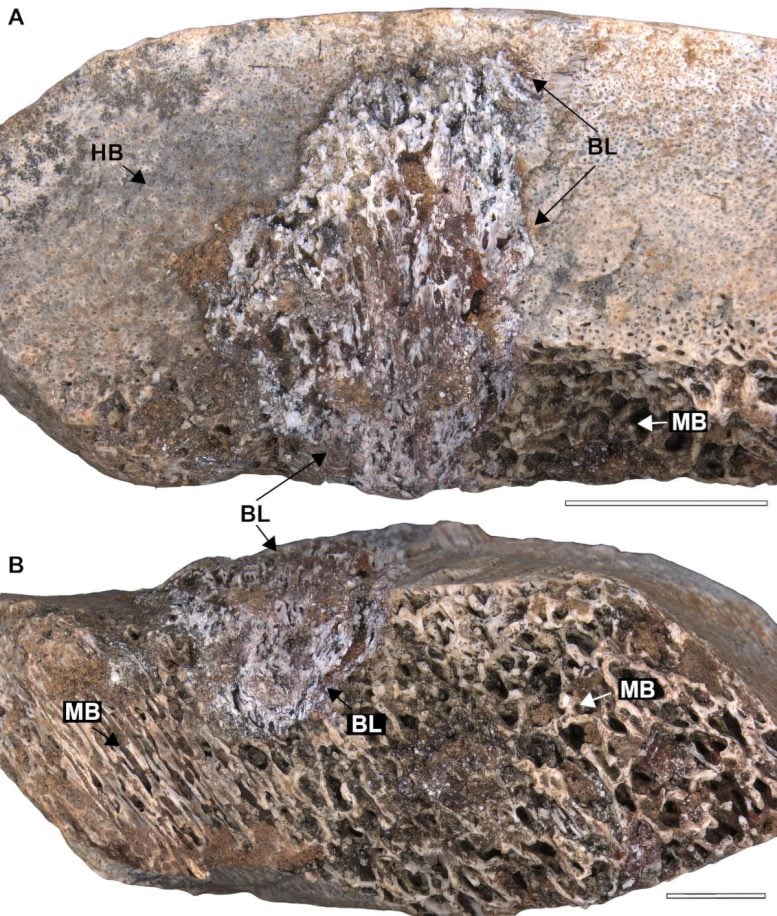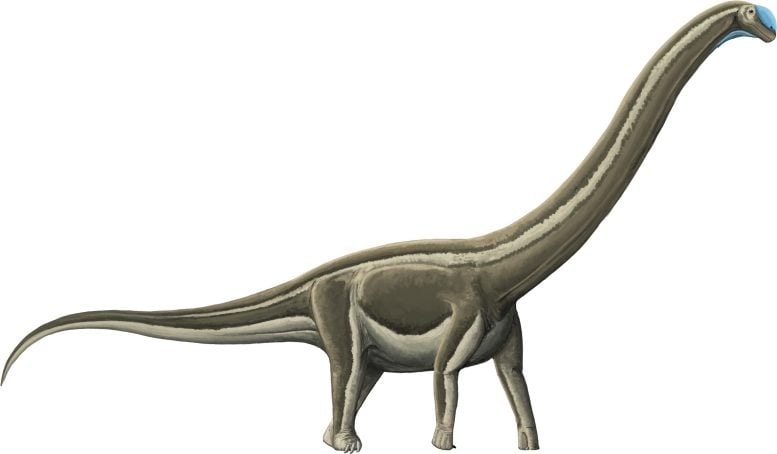
Fossils from Brazil reveal sauropods plagued by a painful bone disease that likely killed them.
Researchers identified multiple forms of osteomyelitis with no signs of healing, suggesting infection was widespread and deadly.
Dinosaur Bones Reveal Deadly Disease in Brazil
A collection of fossilized bones from sauropods (the long-necked dinosaurs) discovered in the municipality of Ibirá, São Paulo, Brazil, shows that these ancient animals were vulnerable to a deadly bone disease in the region.
With support from FAPESP, researchers examined the fossils of six individuals dating to the Cretaceous period, about 80 million years ago, and identified evidence of osteomyelitis. This condition, which can be triggered by bacteria, viruses, fungi, or protozoa, leaves distinctive marks in bone tissue.
The fossils revealed no signs of recovery, indicating the dinosaurs died while the disease was still active and may have succumbed to it. The research was published in The Anatomical Record.
Rare Evidence of Widespread Pathogens
“There have been few findings of infectious diseases in sauropods, the first having been published recently. The bones we analyzed are very close to each other in time and from the same paleontological site, which suggests that the region provided conditions for pathogens to infect many individuals during that period,” says Tito Aureliano, the first author of the study and a researcher at the Regional University of Cariri (URCA) in Crato, in the Brazilian state of Ceará.
One fossil displayed a lesion restricted to the bone marrow, while others uncovered between 2006 and 2023 at the Vaca Morta site showed lesions stretching from the marrow outward. These areas had a spongy appearance, a sign of blood vessel growth, which sets them apart from other bone conditions such as osteosarcoma and bone neoplasia (both forms of cancer).
No evidence of healing was detected. Typically, when bone injuries occur, missing tissue is replaced with new growth, a process commonly seen in fossils showing bite marks from other dinosaurs.

Advanced Microscopy Unlocks Fossil Clues
The study was supported by the Institute for the Study of Parasitic Hymenoptera in the Brazilian Southeast Region (HYMPAR), which is a National Institute of Science and Technology (INCT) supported by the National Council for Scientific and Technological Development (CNPq) and FAPESP.
At IEHYPA-Sudeste, which is coordinated by Angélica Maria Penteado Martins Dias, a professor at the Federal University of São Carlos (UFSCar), researchers analyzed the bones using a scanning electron microscope (SEM) and a stereomicroscope.
Three previously unknown manifestations of osteomyelitis were identified in the fossils. One set contained small protrusions, bone elevations, or “bumps” in a circular shape.
Other protrusions had a pattern similar to fingerprints and were elliptical in shape. Finally, a third set had round, wide marks that were larger than all the others. “These lesions could connect with muscles and skin and become exposed, oozing blood or pus,” explains Aureliano.
It was impossible to determine exactly which bones were analyzed; however, it was known that one was a rib and the rest were from the lower limbs of small and giant species. It was also not possible to identify the cause of the infections.
Earlier Discovery in Ibirania parva
In a 2021 study published in Cretaceous Research, researchers described the first case of bone infection caused by a blood parasite resulting in osteomyelitis. The bones in that case were from a small sauropod species, Ibirania parva, which was found in the same location as the fossils analyzed now.
The region, known as the São José do Rio Preto Formation – because it encompasses the municipality of the same name – had an arid climate with shallow, slow-moving rivers and large pools of standing water. In these environments, many dinosaurs became stuck and died, producing fossils.
Insects and Water Likely Spread Disease
“This environment probably favored pathogens, which may have been transmitted by mosquitoes or by the water itself that was ingested by the fauna, which included dinosaurs, turtles, and animals similar to today’s crocodiles,” says Aureliano.
The author also points out that the evidence provided by the study may be useful for future paleontological and archaeological work because it presents different manifestations of the same disease in bones and differentiates it from others.
Reference: “Several occurrences of osteomyelitis in dinosaurs from a site in the Bauru Group, Cretaceous of Southeast Brazil” by Tito Aureliano, Waltécio Almeida, Marcelo A. Fernandes and Aline Marcele Ghilardi, 30 May 2025, The Anatomical Record.
DOI: 10.1002/ar.70003
Never miss a breakthrough: Join the SciTechDaily newsletter.
1 Comment
It shows the wrong bug can get out of hand. And today we have people tinkering with genetics. What could wrong?